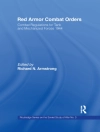In James Madison’s Constitution, Eric T. Kasper and Howard Schweber have assembled a roster of ten prominent contributors to excavate Madison’s thinking about key concepts and issues over questions of what the Constitution requires, permits, and prohibits. Madison’s key role at the Constitution’s drafting was instrumental in forging the document into what it is today.
In many areas, the modern Constitution still reflects Madison’s conception and design. In other areas, however, the Constitution as it emerged in a final text—and as it has been amended and interpreted to the present day—does not always conform to Madison’s vision. Nevertheless, examining Madison’s thinking across a range of constitutional issues has much to offer for understanding our nation’s primary governing document today. Indeed, there are great disagreements among jurists, policymakers, journalists, academics, and the general public about how to interpret the Constitution and what various clauses mean. Frequently, Madison is cited as a source on both sides of political, scholarly, and legal debates over the meaning of various constitutional provisions.
CONTRIBUTORS: Jeff Broadwater, Paul Finkelman, Zachary K. German, Alan R. Gibson, Jack N. Rakove, David J. Siemers, Quentin P. Taylor, George Thomas, Lynn Uzzell, and Michael P. Zuckert
Sobre o autor
PAUL FINKELMAN is president of Gratz College and an American legal historian. He is the author of several books, including Supreme Injustice: Slavery in the Nation’s Highest Court and A March of Liberty: A Constitutional History of the United States.












